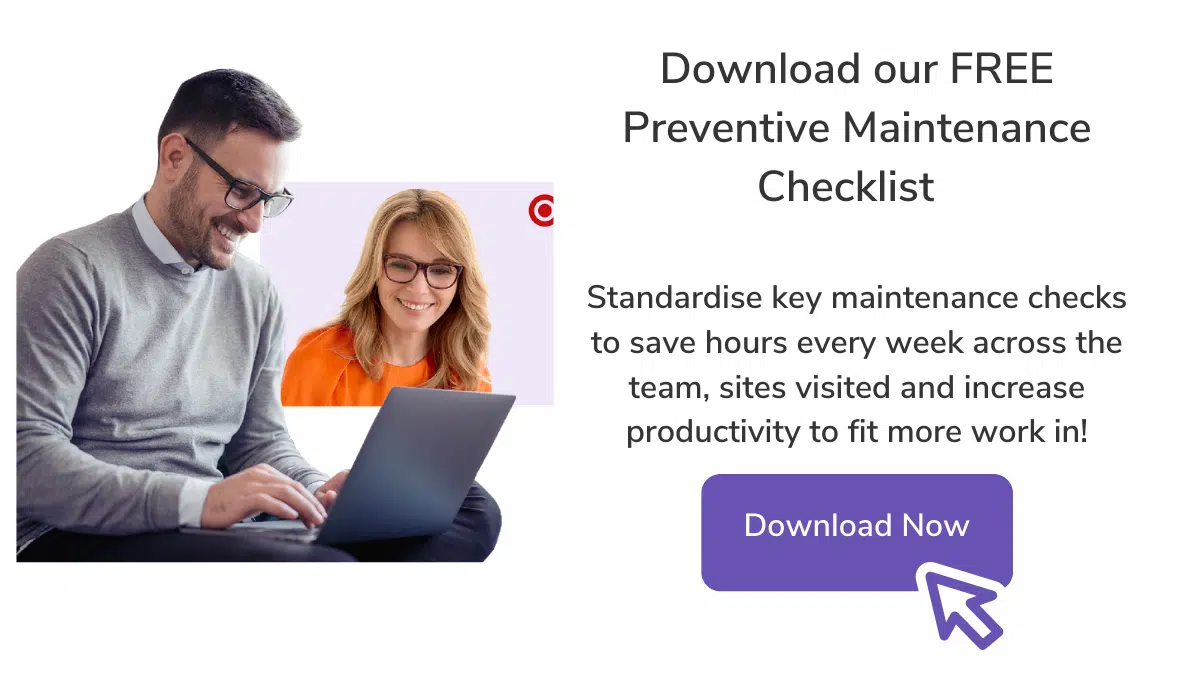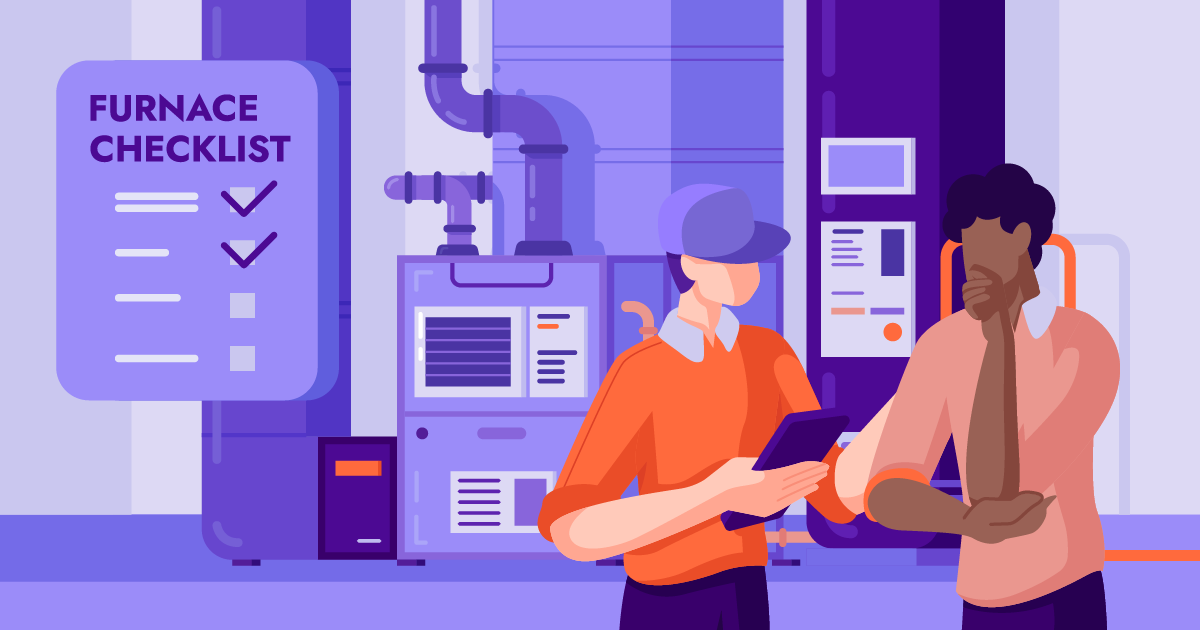Air Compressor Maintenance Checklist For 2023
How often does an air compressor need to be maintained? Is normal maintenance enough? Air compressors are a standard tool in a technician’s inventory and get their fair amount of use throughout their lifetime.
When you consider your air compressor checklist, you want to consider actions that are going to be more along the lines of preventive maintenance rather than reactive servicing, saving you the stress and drama down the line. As a commercial HVAC company, maintaining equipment is an important part in running a successful business and with a busy workflow, there isn’t time for unexpected breakdowns when you have a full schedule.
One of the biggest challenges with air compressor maintenance is the lack of knowledge both about compressor servicing and desired work conditions. Mistakes can easily amount to wasted time and money and can leave your technicians without tools unexpectedly. This can lead to delays on the job site and issues with customer expectations.
Whether you are a new field service business or an established HVAC company looking for some structure, a maintenance checklist is a perfect way to systemise your equipment.
The Importance of Preventative Maintenance
When looking at the best maintenance practices concerning air compressors, the best method is always preventive maintenance. Avoiding downtime is one of the main goals in preventive maintenance to ensure equipment is performing at its peak without any issues. When you pick up small issues, like a clogged filter, cracked belt or sticky rotary element, you can avoid these from progressing in to bigger issues. Reviewing and adjusting lubrication or checking for air leaks will prevent these from consuming more time and money then letting them snowball into bigger issues (and possibly result in a total failure resulting in a write-off).
Crafting an air compressor maintenance checklist needs to take into consideration both the duration of the asset lifetime and different components of each service/maintenance as it ages. You may find some checks need to be done daily, weekly, monthly or quarterly to reduce damage being caused.
Checklists for success
If your preventative maintenance schedule is kept up to date, you will catch small issues earlier and minimise excessive equipment downtime. A perfect planned maintenance schedule means you can put your efforts towards building your business rather than constantly repairing it.
The Benefits of Regular Compressor Maintenance include:
- Avoiding unplanned equipment downtime
- Save time and money on reactive maintenance
- Gain control over your maintenance schedule rather than interrupting your busy day with unexpected repairs
- Decreased energy costs
- Increased efficiency and life cycle of equipment
- Prevent voiding warranty
- Improved safety for your team and anyone on site
Top 10 Factors To Check
There is more to planned maintenance than just looking for dirt or moisture and there can be fatal consequences to your equipment if you neglect the rest of the maintenance work. It is important to track wear and tear on compressors and ensure it is not running under strain due to a fixable issue.
When you have a controlled maintenance plan for your equipment you can start to measure asset management KPIs . When you set goals and use checklists, you remove the possibility of forgetting to check something and prolong the compressor’s lifespan. With an asset management system, your can set automated reminders and track defects when they arise.
The top 10 most important preventative maintenance checks include:
1. Don’t forget the Intake Vents
Due to environmental factors, intake vents can easily clog with dust and dirt. Checking intake vents ideally should be done daily when using a compressor in order for the internal parts of the equipment to be in perfect running order without overheating.
2. Clean the Air Filters
You can’t expect your air compressor to work at full capacity and produce clean air if you have unclean filters. Filters can easily degrade over time and need to be cleaned or changed often in your maintenance routine.
3. Check for any Pipe Blockage or Contamination
Rust, dust, debris or dirt can clog pipes and cause blockages that lead to a decrease in pressure valves, interrupting proper operation of your compressor. When your pipes are contaminated it can affect internal components and you may find you can’t power heavy duty machines with the performance you desire.
4. Manage Compressor Condensation
As a part of the compressor cooling down stage, moisture is taken from the compressed air and can cause condensation to build up. This can lead to disturbances in the quality of air produced, and lead to machine rust that can damage the internal electric circuits.
Excessive condensation build up, can also be caused by environmental factors such as humidity and temperatures and is something a technician needs to consider when maintaining their compressor. Sludge can also build up where air leaves the machine at entry points like tanks and dryers and when there is water or oil that acts as a dirt collector. This can all be easily avoided with regular maintenance checks.
5. Don’t Turn a Blind Eye to Pressure Loss
When you have a higher than 10% drop in pressure, you will find your compressor is put under more strain than necessary. When your compressor is under such strain, you will find there will be more wear and tear that could have easily been avoided by replacing parts before they cause bigger issues such as pressure loss.
6. Lubricant is key
For smooth operations of the internal parts of your compressor and minimal wear and tear, you want to ensure you have fresh lubricant (ideally replaced each 3-6 months). Air compressor preventive maintenance and proper lubrication can avoid strain on joints and corrosion that can leave your machine at risk of rust.
For smooth operations of the internal parts of your compressor and minimal wear and tear, you want to ensure you have fresh lubricant (ideally replaced each 3-6 months). Here’s a step-by-step guide on how to check the oil level:
- Locate the oil sight glass: This is usually a small, clear circle located on the side of the compressor. It allows you to see the oil inside the machine.
- Check the oil level: The oil should be halfway up the sight glass. If it’s below this level, you’ll need to add more oil.
- Check the oil color: The oil should be a clear amber color. If it’s dark or dirty, it’s time to change the oil.
- Add or change the oil as necessary: If you need to add more oil, make sure to use the type recommended by the manufacturer. If the oil is dirty, you’ll need to drain the old oil before adding new oil.
Remember, always refer to your air compressor’s manual for specific instructions related to your model. Proper lubrication is crucial for the smooth operation of air compressors, as emphasized in this study.
7. Check your Oil Filter
Just as you wouldn’t let your car run without oil, you shouldn’t let your compressor run without correct oil and filters. When your compressor maintenance neglects services and filter changes, your filters, you can get internal oil contamination. Ideally you want to replace the oil filter often but it can vary anywhere from 4,000 – 8,000 hours of usage, and this can change from compressor to compressor.
8. Grease your Motor Bearings
With constant movement, you need to ensure that your bearings are sufficiently greased to allow the motor to run at full capacity. Without enough lubrication, bearings can become stuck and you’ll find you have a failed motor on your hands and a much bigger problem to solve.
9. Inspect your Belts
Belt inspection is another important compressor maintenance check that saves you time and money in the long run. Having correct belt tension that is balanced and strong is vital in having smooth operations. When you neglect maintenance checks of your belts, you leave the rubber of the belt open to operational wear that can lead to your belt snapping.
10. What else should you consider?
Apart from regular compressed air system cleaning, there are also checks that contribute to the smooth operation of any machine such as:
- Check for oil/air leaks
- Oil levels
- Correct voltage
- Correct temperature
- Correct Amps and Voltage
- No debris in coolers
- Functioning air dryer
- No excess Vibration of parts
What’s in a checklist?
The easiest way to prevent simple mistakes or steps in servicing being missed, is creating a checklist for your team to follow. It can be something as simple as steps to clean and put your equipment away. It can also have more complex workflows such as changing filters, pressure relief valves, rotary screw or belt tension. This is such an important part of air compressor preventive maintenance, and you will find for each machine this may vary, depending on the amount of use and type of compressor.
Forgetting to service and maintain your air compressor can lead to disasters happening at the worst times, usually during an important job. Without air system maintenance checks, you are leaving yourself at risk of these pesky defects dragging your productivity down. See our blog on action items that can give your business the boost it needs.
In your preventive schedule you can divide up your maintenance into a daily, weekly, monthly or quarterly service and set reminders for each of these to be followed up. Ensuring your team is up to date on training and requirements here is vital to keeping your air compressors and equipment in top shape and ready to work.
Daily Compressor Checks
- Can the compressor cool down without any obstructions to the vents or filters?
- Are the oil levels okay?
- Is the pressure switch working?
- Check lubrication
- Empty the water from the receive tank
- Are there any visual signs of damage to your machine?
- Are there any external factors that will impact operations? (Water on the floor, dust in the air, excessive humidity)
- Are the guards in the correct position?
- Is the air receiver and dryer operational?
- Are all the parts accountable for when you pack up?
- Will it overheat/freeze where it is being stored?
Weekly Compressor Checks
- Check oil levels
- Clean coolers
- Check condensation isn’t building up
- Check belts are strong and in correct position
- Check temperature
- Check amps and voltage
- Check display readings
- Check filter element (if relevant)
- Check dryer
Monthly Compressor Checks
- Check and clean dryer
- Check drain valves
- Clean filters
Quarterly Compressor Checks
- Check air filter element
- Check run hours
- Check for upcoming services for each unit
Safety Measures
Working with air compressors involves certain risks, so it’s important to follow safety measures to prevent accidents and injuries. Here are some safety tips to keep in mind:
- Wear protective gear: Always wear safety glasses and hearing protection when operating an air compressor.
- Regularly inspect the compressor: Check for any signs of wear, damage, or leaks. Regular maintenance can prevent accidents and extend the life of your compressor.
- Keep the compressor clean: Dust and dirt can cause the compressor to overheat, so make sure to keep it clean.
- Never exceed the maximum pressure: Every compressor has a maximum pressure rating. Exceeding this can cause damage or even cause the compressor to explode.
- Use the right hoses and fittings: Always use hoses and fittings that are rated for the pressure of your compressor.
- Keep the compressor in a well-ventilated area: This prevents overheating and the build-up of harmful fumes.
Remember, safety should always be your first priority when working with air compressors. The importance of safety measures in industries that use air compressors is highlighted in this study.
Do you have the right team on the job?
Having a checklist for maintenance air compressor checks is great, but without a trained team all your planning will go straight out the window. To ensure that your technicians and operators are trained sufficiently, a great tool to implement can be a field service software that will allow your team to have all the knowledge they need in the field from their mobile or tablet.
When you update your team on the significance of checklists and preventive maintenance, you will ensure to pick up on any defects before they cost you an arm and a leg. With correct asset tracking and operational maintenance checklists, you will gain clarity over your compressor’s life cycle and be able to take any necessary steps towards efficiency. When you take a look at your workflow and your maintenance needs, you might find you don’t have the right in house skills to perform your servicing.
Hiring professionals to service or inspect your compressor, can be a safer option if you and your team don’t have the knowledge or confidence. If you have an expensive compressor with complicated moving parts, you don’t want to risk an easily avoidable mistake by dabbling with your own equipment – possibly costing you more if you have to buy a new machine.
FieldInsight
With a job management software like FieldInsight, you gain the right tools to schedule maintenance visits, track defects and extend equipment life cycles. When you have automated software at your fingertips that is accessible to both the office and the field, you remove mountains of paperwork that accompany maintenance and focus on what matters.
When technicians are equipped with FieldInsight, checklists can easily create repeatability and be adjusted as needed. With this accountability you create in your business, you can maintain an audit trail for warranty purposes, so if you have regularly serviced your compressor and something goes wrong – you’ll be covered.
FieldInsight isn’t just extremely useful for compressors, you can also use it to bring together all the moving parts in your business from asset management to sales to SWMS to generating reports. Don’t put your HVAC success on hold, Book a demo today and get your air compressor maintenance on track.
Learn how our software can help you manage your equipment, schedule checks, and minimize downtime.
Book a discover call today!
Frequently Asked Questions:
Q: Why is preventive maintenance important for air compressors?
A: Preventive maintenance ensures peak performance, reduces downtime, and extends equipment life by catching issues like clogs or leaks early.
Q: What are key checks for air compressor maintenance?
A: Daily vent and oil checks, weekly filter and belt inspections, monthly drain valve cleaning, and quarterly service reviews.
Q: How does software improve compressor maintenance?
A: FieldInsight automates scheduling, tracks defects, and ensures consistent maintenance, saving time and costs.
What You Should Do Now
- Book a Demo. You’ll be in touch with an automation expert who has worked in this space for over 5 years, and knows the optimal workflow to address your needs.
- If you’d like access to free articles about managing HVAC workflows, go to our blog.
- If you know someone who’d enjoy reading this page, share it with them via email, Linkedin, Twitter, or Facebook.






